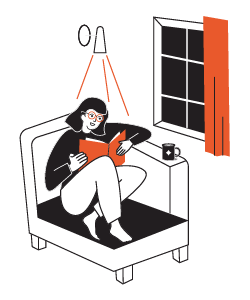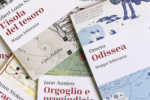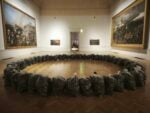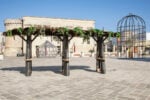Solid Air
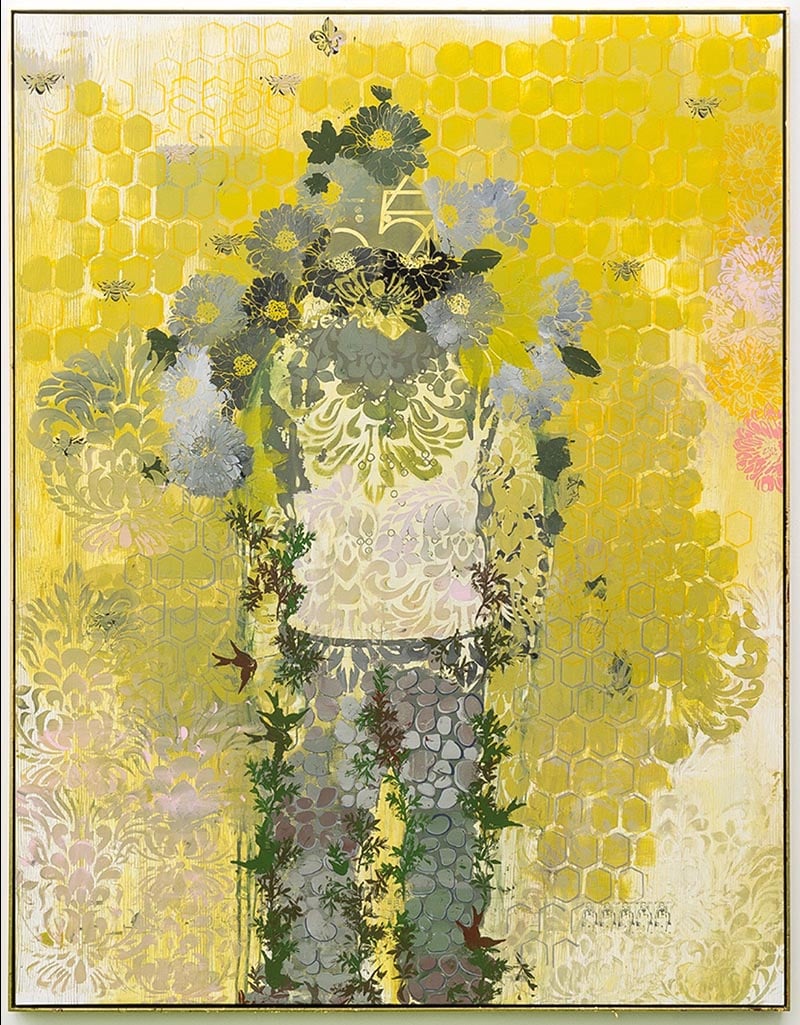
Con l’ossimoro “Aria Solida“ nel 1973 John Martyn, un visionario musicista scozzese, intitolava uno tra i più seminali album folk della musica moderna europea, intriso di blues, jazz e lirica visiva.
Comunicato stampa
SOLID AIR
(Aria Solida)
Con l’ossimoro “Aria Solida“ nel 1973 John Martyn, un visionario musicista scozzese, intitolava uno tra i più seminali album folk della musica moderna europea, intriso di blues, jazz e lirica visiva.
“ You’ve been taking your time And you’ve been living on solid air
You’ve been walking the line and you’ve been living on solid air
Don’t know what’s going round inside and I can tell you it’s hard to hide
When you are living on solid air… “
Ieri come oggi colpisce l’evocativa quadratura del cerchio sintetizzata con la contrapposizione di due concetti: l’etereo ed il solido.
Analogo amalgama può essere riscontrato oggi nel lavoro dei quattro artisti che partecipano alla mostra e che attraverso le loro opere rendono una dimensione di mistero, sacralità, fragilità sociale e talvolta, minaccia incombente.
Il cortocircuito che si innesca produce la tensione palpabile nell'aria, l'irrequietezza e l'attesa di un evento.
Alle pareti si rincorrono opere svolazzanti, fatte di sottilissimi capelli sintetici multicolori; tele raffiguranti imponenti sentinelle che sembrano incombere; accenni di agglomerati di rocce sintetiche e drappi mistici sporchi di cenere.
E' uno strano ambiente, dove si scontrano forze opposte: l'antropocene denunciato da Mirko Canesi, attraverso i suoi frammenti di "grotti" contemporanei, convive con le pieghe meditative e sciamaniche delle tele di Jaime Poblete ma il suo recupero di tradizioni precolombiane si scontra e confronta con lo stravolgimento contemporaneo dei tappeti persiani smaterializzati da Hiva Alizadeh. Uniche Presenze, evanescenti ma spetrali, sono le 3 figure dipinte da Michael Bevilacqua, misteriosi umanoidi che emergono da una vegetazione patternizzata.
Una quarta figura tende all’astrazione. Ha le sembianze di una qualche forma aliena, piatta e bidimensionale, come schiacciata dall'Aria Solida.
Gli artisti in mostra:
Hiva Alizadeh (1989, Kerman. Vive a Teheran)
Il lavoro di Alizadeh trae le sue origini e la sua abilità nella tradizione millenaria dei tappeti persiani di Kerman in Iran.
Ciononostante, Alizadeh applica la sua tecnica e conoscenza usando un media diverso (i capelli sintetici) per ottenere una interpretazione contemporanea della tradizione, aggiungendo alle sue creazioni un tocco psichico e cosmopolita. L’Oriente e l’Occidente si incontrano così generando un complesso intreccio percettivo.
Michael Bevilacqua (1966, Carmel. Vive a New York)
conosciuto per la sua ecletticità e perpetua mutazione nella ricerca della contemporaneità, Michael Bevilacqua, nella sua lunga carriera, mantiene come costante la pittura per layer, indifferentemente che si tratti di dipinti digitali o analogici. La loro stratificazione crea senso e restituisce la complessità in cui siamo immersi quotidianamente. I suoi lavori sono reazioni istintive agli eventi sociali e culturali che abitano il suo mondo.
Mirko Canesi (1981, Milano. Vive tra Milano e Bruxelles)
Si concentra sul potere generativo della superficie che l’artista rielabora attraverso l’uso di materiali e tecniche provenienti dal mondo dell’industria, delle nuove tecnologie e della tradizione artigianale e decorativa, per rielaborare temi quali l’antropocentrismo, l’ecologia e il concetto di realtà. Egli opera con l’intenzione di superare quella che convenzionalmente viene definita “Creatività“ adottando una prospettiva neutra e non gerarchica, come una creatura primitiva tratta dall’universo videoludico.
Jaime Poblete (Chile 1981) dipinge monocromi su tele che manipola, cucendo Pieghe sulla superficie per andare nella direzione della fisicità del dipinto. La pittura diventa un gesto ripetitivo e meditativo, connesso con il nodo, la tessitura, il quipu Inca, la veste rituale, la grafica asimmetrica precolombiana.
La ricerca di questo artista tende verso una struttura geometricamente imperfetta, simbolicamente efficace come quella del Rehue, la scala scavata nel trono di un albero per cui la Machi, la sciamana Mapuche, ascende per agire come ponte tra le forze del cielo e della terra.
SOLID AIR
With the oxymoron "Solid Air" in 1973 John Martyn, a visionary Scottish musician, titles one of the most seminal folk albums of modern European music, imbued with blues, jazz and visual lyrics.
" You've been taking your time and you've been living on solid air
You've been walking the line and you've been living on solid air
Don’t know what’s going round inside and I can tell you it’s hard to hide
When you are living on solid air ... "
Yesterday as today, the evocative squaring of the circle is striking, summarized with the juxtaposition of two opposing concepts: the ethereal and the solid.
A similar amalgam can be found today in the work of the four artists who participate in the exhibition and who, through their works render a dimension of mystery, sacredness, social fragility and sometimes an impending threat.
The short circuit triggered produces palpable tension in the air, restlessness and anticipation of an event.
The walls are lined with fluttering works made of very thin multicolored synthetic hair, imposing paintings depicting looming sentries, hints of agglomerations of fake rocks and mystical drapes soiled with ash.
It is a strange environment, where opposing forces collide: the anthropocene denounced by Mirko Canesi, through his fragments of contemporary "grottos", coexists with the meditative and shamanic folds of Jaime Poblete's canvases but his recovery of pre-Columbian traditions clashes and compares with the contemporary distortion of the Persian carpets dematerialized.
The only Presences, evanescent but spectral, are the 3 figures painted by Michael Bevilacqua, mysterious humanoids that emerge from a patterned vegetation.
A fourth painting with a figure in the show tends to abstraction. It has the appearance of some flat, two-dimensional alien form crushed by Solid Air
The artists on show:
Hiva Alizadeh (1989, Kerman. Lives in Tehran)
Alizadeh's work traces its origins and skill to the millennial tradition of Kerman Persian carpets in Iran.
Nevertheless, Alizadeh applies her technique and knowledge using a different medium (synthetic hair) to achieve a contemporary interpretation of tradition, adding a psychic and cosmopolitan touch to her creations. The East and the West thus meet, generating a complex perceptual interweaving.
Michael Bevilacqua (1966, Carmel. Lives in NY)
Known for his eclecticism and perpetual mutation in the search for contemporaneity, Michael Bevilacqua, in his long career, keeps painting by layer as constant, regardless of whether it is digital or analogue paintings. Their stratification creates meaning and restores the complexity in which we are immersed on a daily basis. His works are instinctive reactions to the social and cultural events that inhabit his world.
Mirko Canesi (1981, Milan. Lives between Milan and Brussels)
It focuses on the generative power of the surface that the artist reworks through the use of materials and techniques from the world of industry, new technologies and the artisan and decorative tradition, to rework themes such as anthropocentrism, ecology and reality concept. He works with the intention of overcoming what is conventionally defined as "Creativity" by adopting a neutral and non-hierarchical perspective, like a primitive creature drawn from the videogame universe.
Jaime Poblete (Chile 1981) paints monochrome on canvases that he manipulates, sewing folds on the surface of the canvas to go in the direction of the physicality of the painting. Painting becomes a repetitive and meditative gesture, connected with the knot, the weaving, the Inca quipu, the ritual dress, the pre-Columbian asymmetrical graphics.
The research of this artist tends towards a geometrically imperfect structure, symbolically effective like that of the Rehue, the staircase carved into the throne of a tree for which Machi, the Mapuche shaman, ascends to act as a bridge between the forces of heaven and earth.
